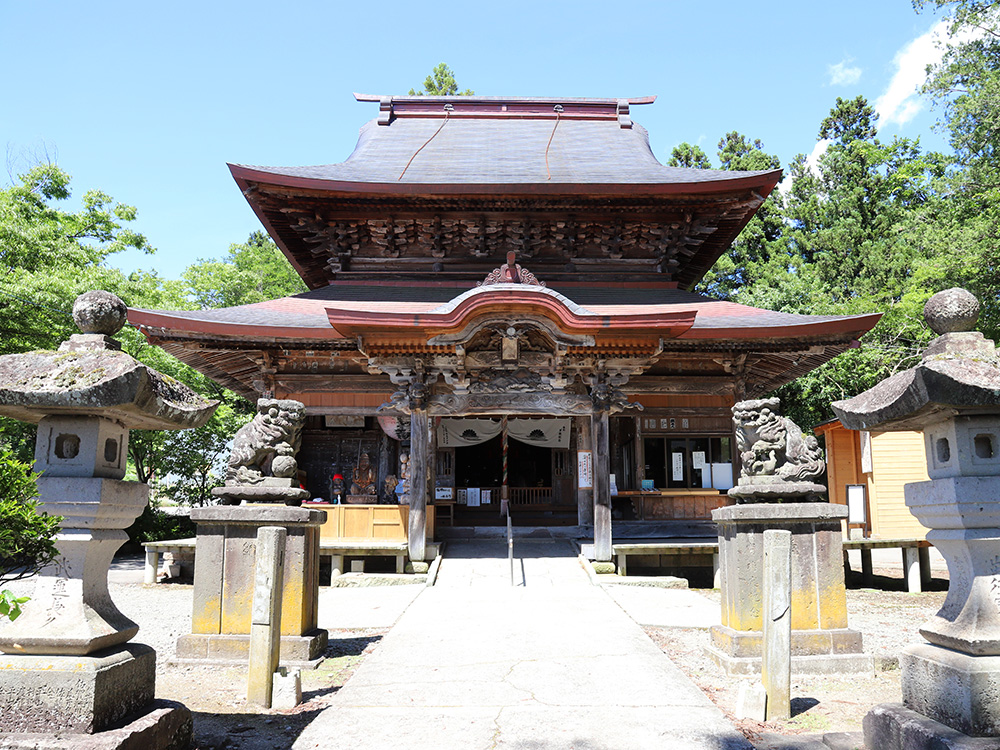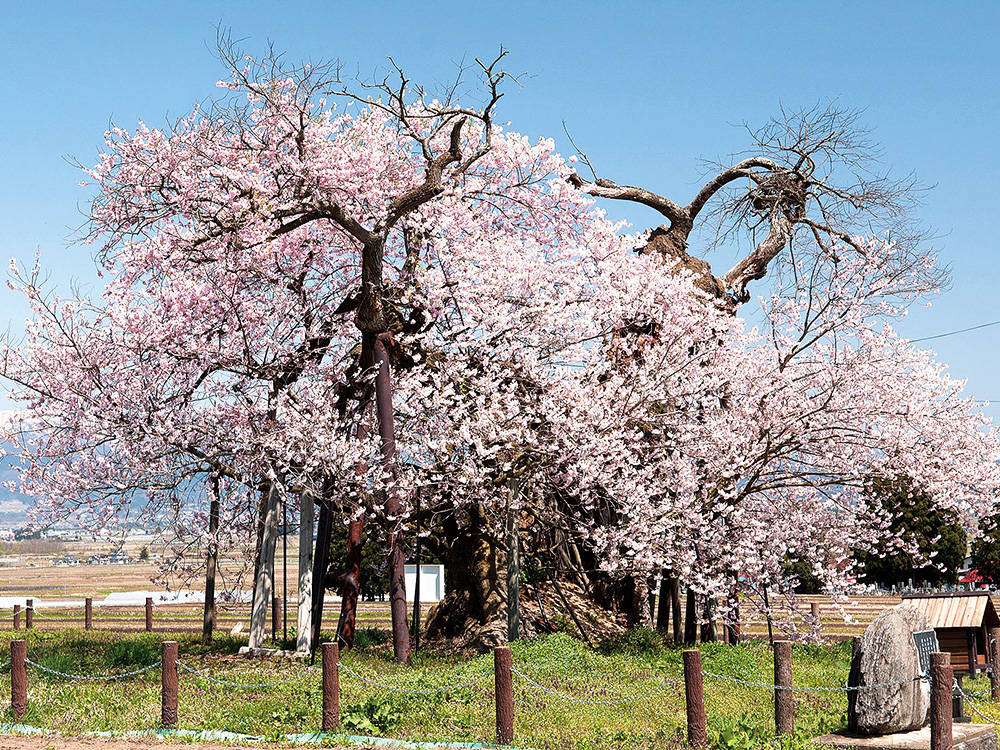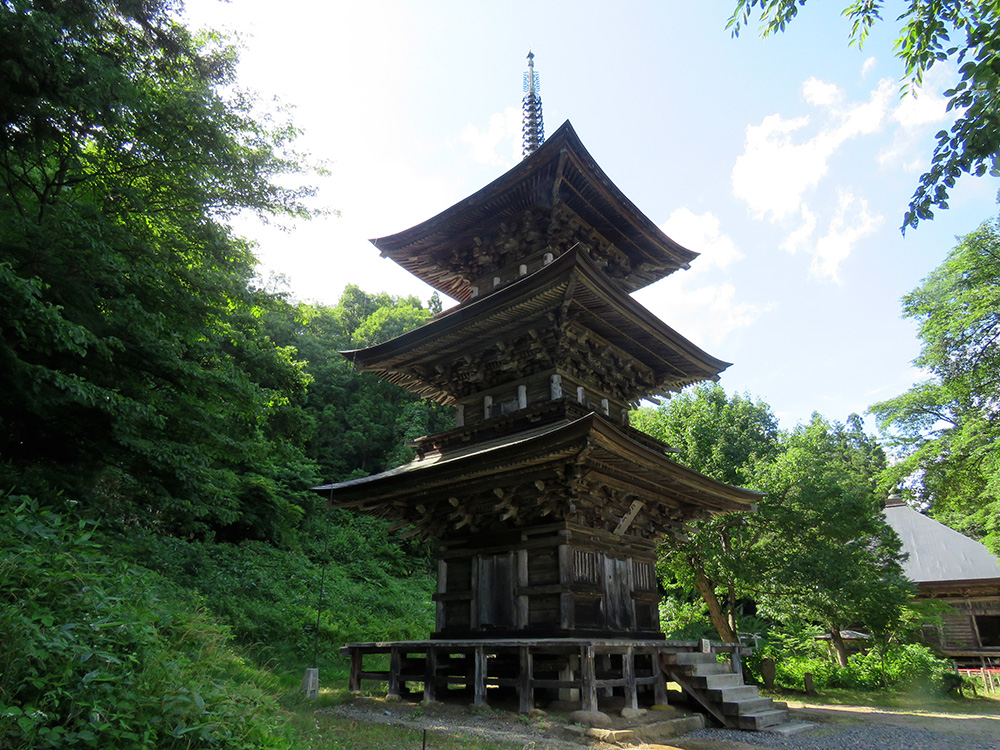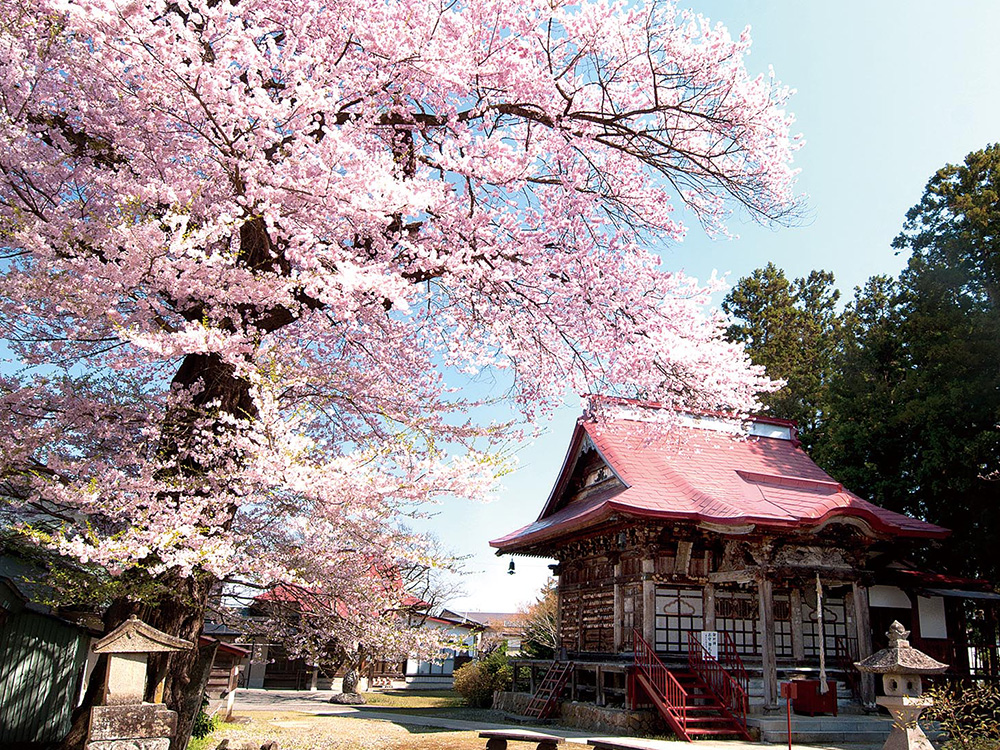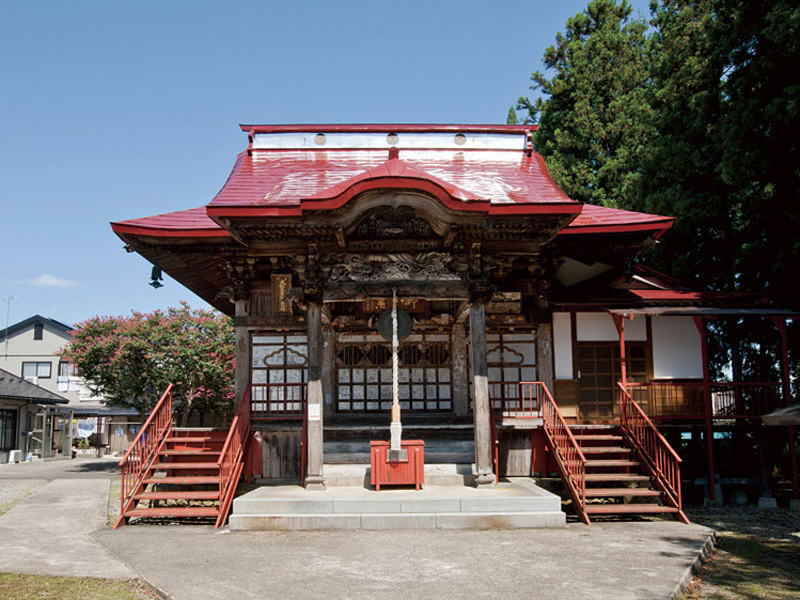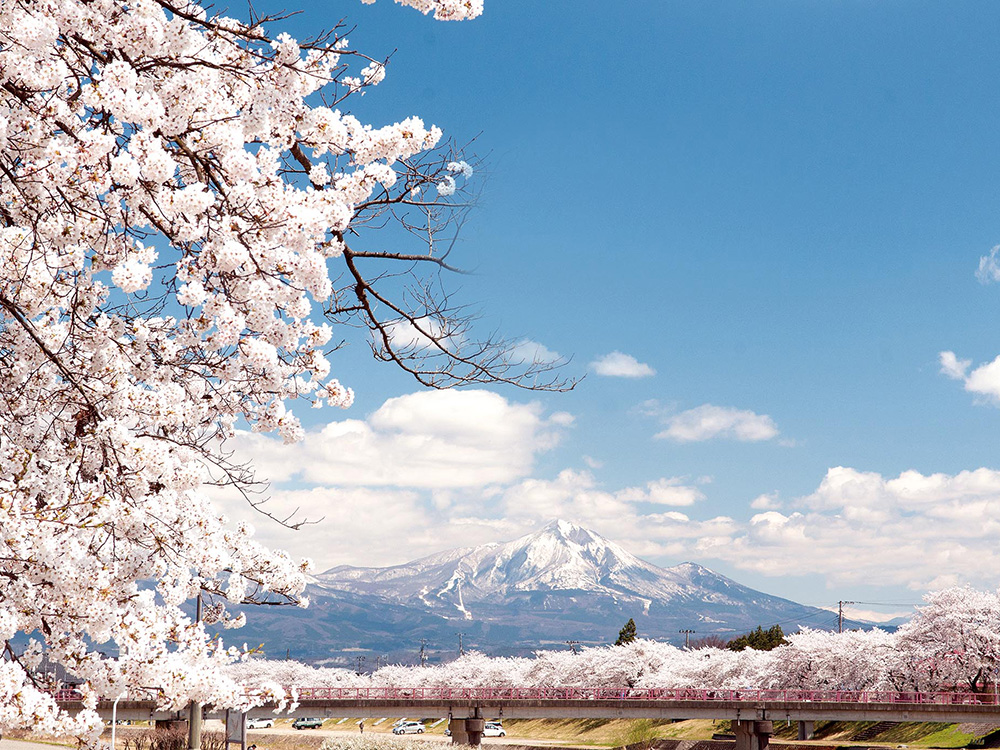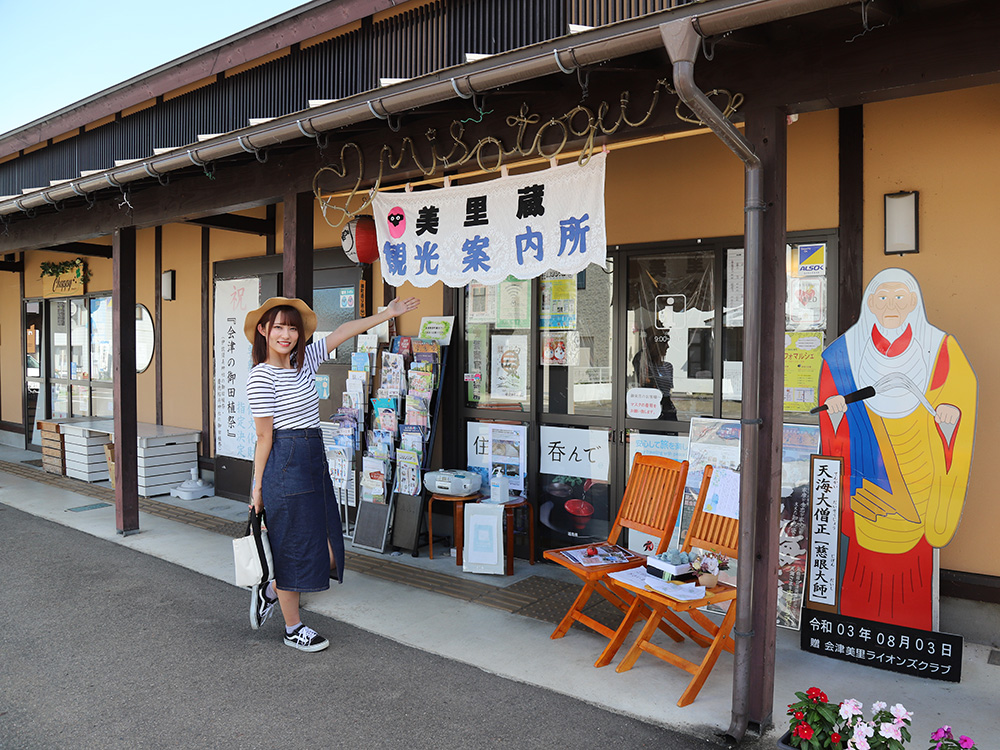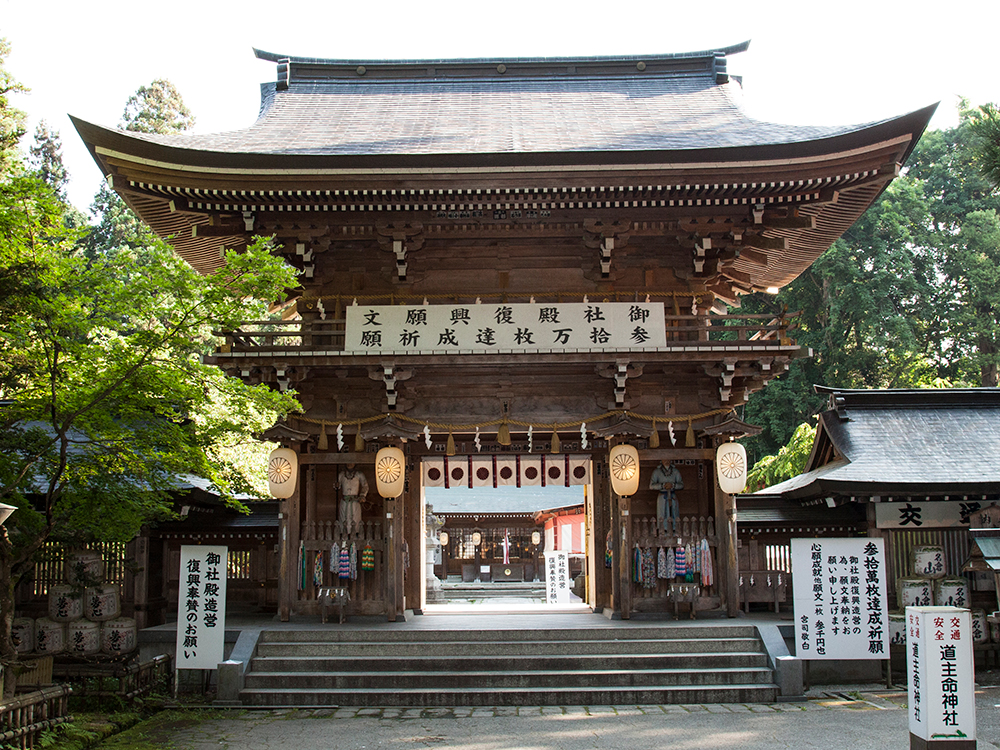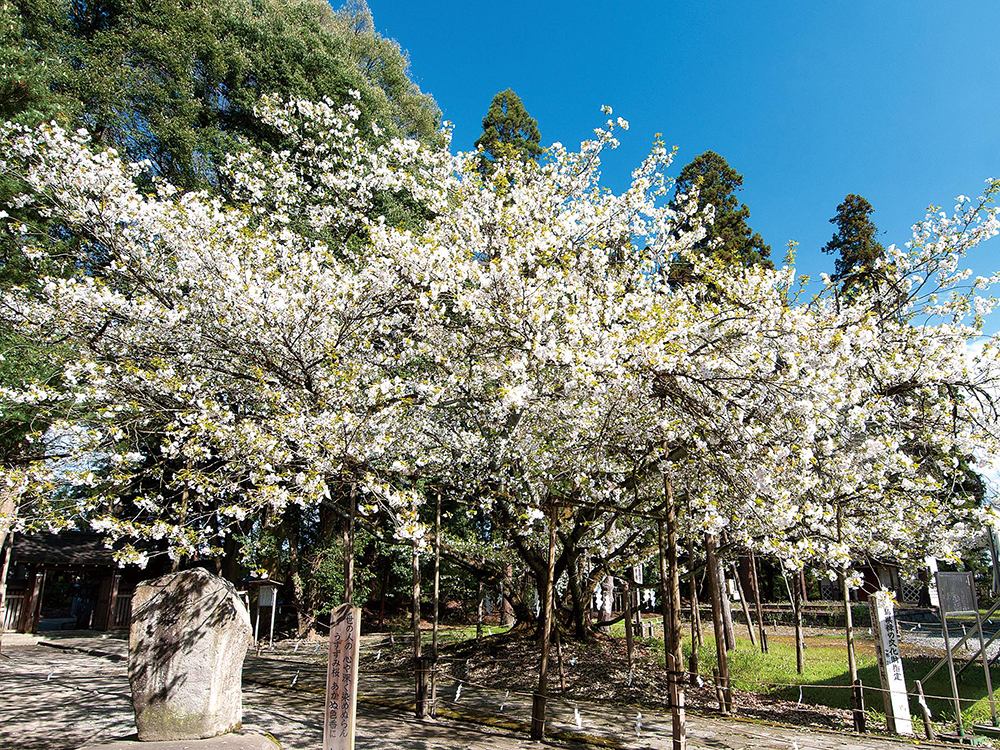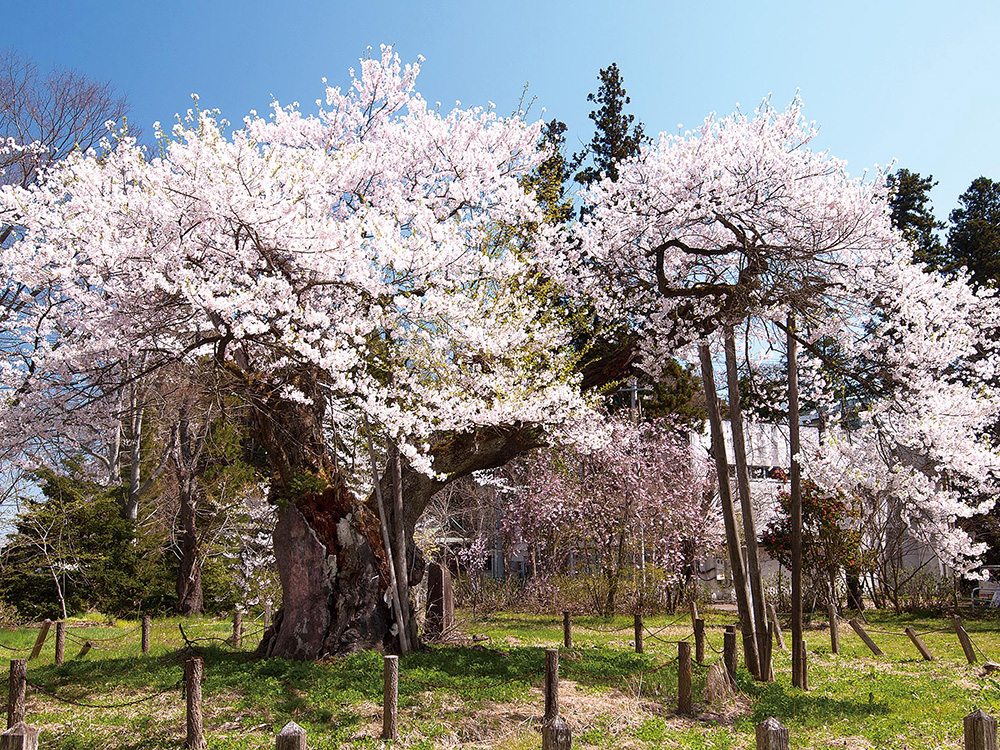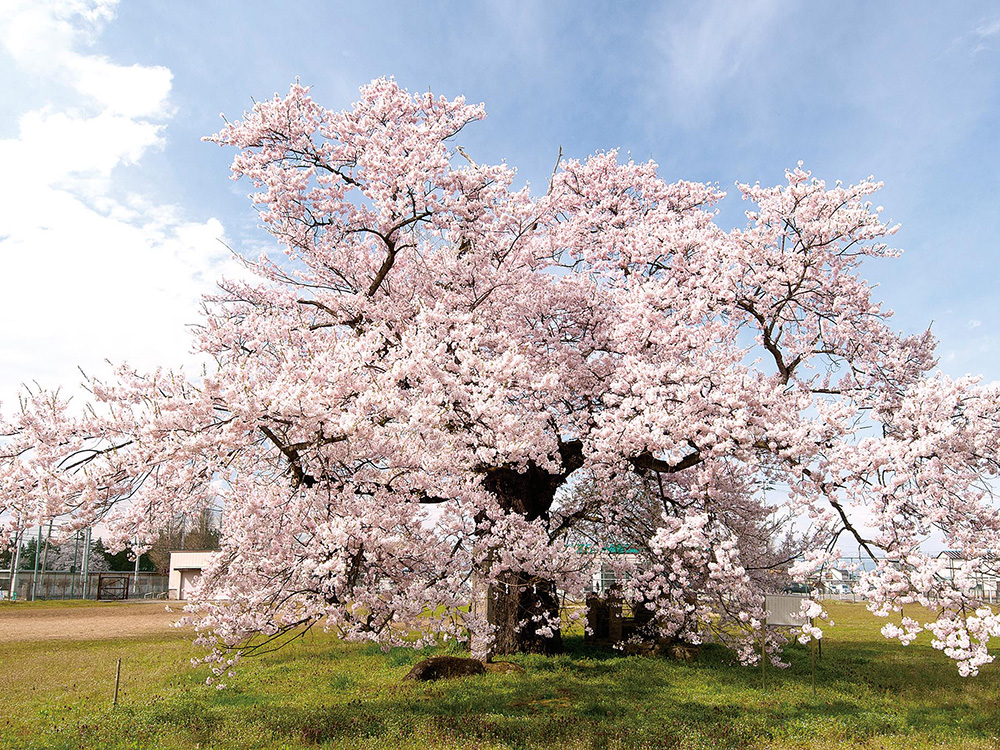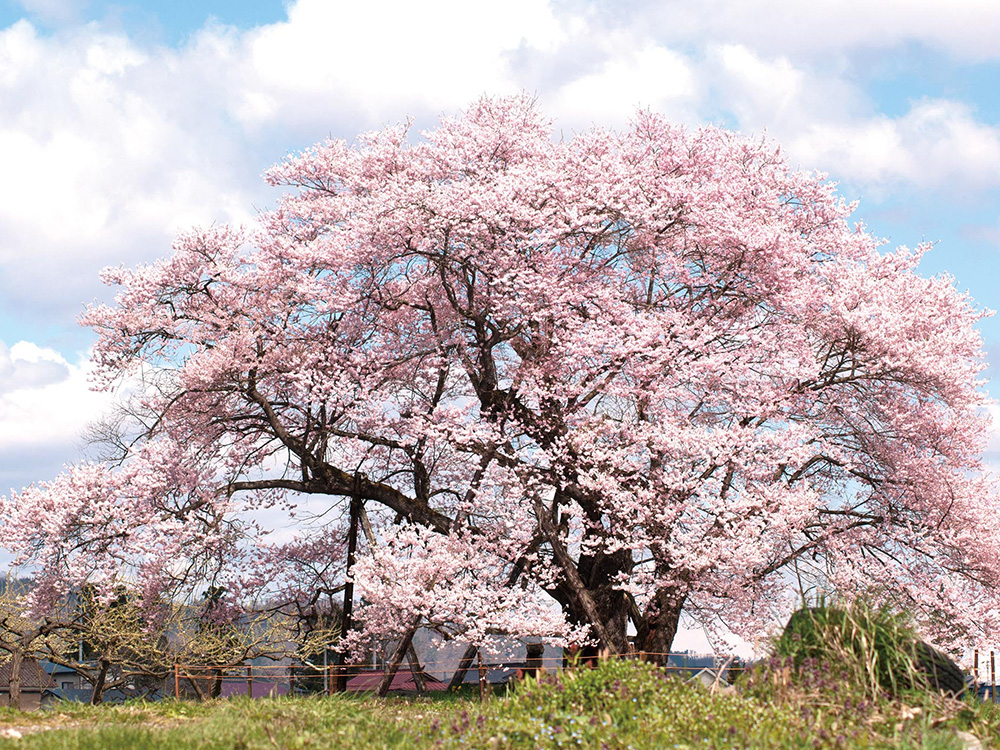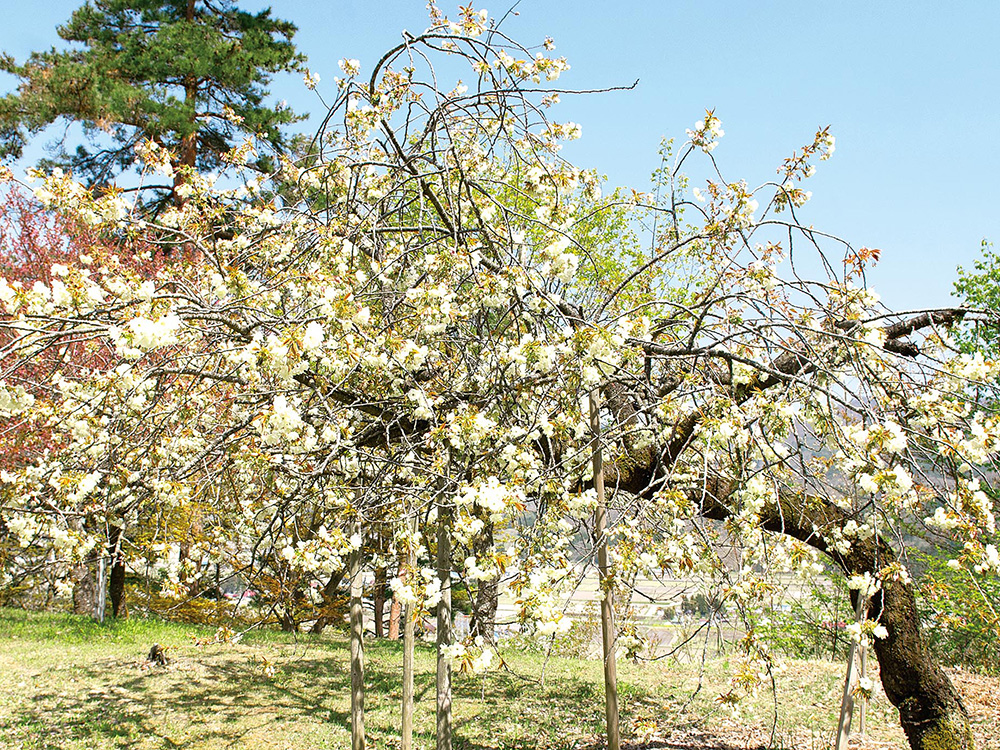
Aizu Misato Town
Cherry blossom tour in
Aizu Misato Town
Season: April – June month / Duration: about 4.5 hours
Aizu Misato Town is home to two of the famous cherry trees known as “Aizu Gozakura”.
While touring the beautifully blooming cherry blossoms, you can also enjoy delicious food and sweets!
Fumonzan Koanji Temple (Nakada Kannon)
Guided SpotsStay: about 30 min.
It is known as “Kannon-sama of Nakata,” one of the three Aizu Korori Kannon. There is a “Dakitsuki-bashira” in the hall, which is said to bring the fulfillment of one’s wishes in all matters. It is said that Egawa Nagasha built the main image to mourn the sudden death of his only daughter, Tsunehime, in the middle of the Kamakura period. It is also known as the 30th temple of the 33 Kannon of Aizu, where Hideyo Noguchi’s mother, Shika, prayed for the healing of her son’s burns and his success in life, and where she made a moon visit.
Contact / Fumonzan Koanji Temple 0242-78-2131
Hours / Individuals: Monday, Wednesday, and Friday from 10:00 a.m. Groups: Accepted at any time (reservations required for all)
Entrance fee / 500 yen
Approximately 5 minutes by car
Chitosezakura of Yonezawa
Flowering time: Mid-April
Stay: approx. 20 min.
Located in the farmland of Yonezawa village in the Niitsuru area, this single cherry tree can be seen from a distance for its dark red flowers and large tree shape. The tree is over 700 years old, with a trunk circumference of 6 m, a height of 14 m, and branches stretching 10 m from east to west and north to south. It is also known as the “seed sowing cherry tree,” and it is said to sow the seeds of crops when it blooms.
It is said that a local landowner planted this tree in 1273 as a memorial service for Chitose (Tsunehime), a daughter of Egawa Chosha.
Approximately 5 minutes by car
tiger tail cherry
Flowering time: Late April
Guided SpotsStay: about 40 minutes (including Hoyoji Temple)
It is one of the five cherry trees of Aizu and is planted in front of the Kannondo Hall of Hoyoji Temple. It is said to have been planted in 808. It is a type of satozakura, and the current tree is a replacement of an old parent tree that died and was replaced by a tree that grew from the root base. It is said that the name “satozakura” comes from its double-petaled, light red flowers, which resemble a tiger’s tail with only the tips of the stamens petalized.
There is also a tragic love legend that the daughter of Egawa Chosha, Tsunehime, came to view the cherry blossoms and fell in love at first sight with the local head of the estate, Wakasama, who died without fulfilling his love.
Around the end of April, the Toranoo Tea Ceremony is held and visitors can enjoy an outdoor tea ceremony.
Raiden Mountain, Hoyoji Temple
Stay: approx. 20 min.
The only temple in Aizu with a three-story pagoda, it is said to have been built in 720 by Tokudo Shonin, a priest from Harima (Hyogo Prefecture). The kitchen inside the Kannon Hall, where the statue of the Kannon is enshrined, is known as the oldest kitchen in Aizu with a name of the year in which it was made. The hall also houses a statue of Kongorikishi, made of one piece of wood in the late Heian period (794-1185), both of which are designated as important cultural properties by the national government.
Tel. 0242-54-6090 (Fukusenji Temple)
Approx. 10 minutes by car
Lunch (Takata area)
Stay: approx. 1 hour
Wisdom Cherry
Flowering time: Late April
Guided SpotsStay: about 30 min.
The Benihigan-zakura cherry tree blooms in the precincts of Seiryuji Monju-in Temple, which is famous as one of the three great Monju in Japan, “Monju of the brush”, and blooms dark red flowers. It is said to be over 200 years old, and is a tall and powerful cherry tree.
Seiryuji Monju-do Temple
The temple is visited by many people from within and outside of the prefecture who come to pray for the fulfillment of their studies and the improvement of their arts and crafts. The temple is associated with Tenkai High Priest, a famous monk who served from Ieyasu Tokugawa to Iemitsu Tokugawa. The annual festival is held on February 25.
Approximately 2 minutes by car
Senbonzakura of Miyagawa
Flowering time: Late April
Stay: approx. 20 min.
It is said that this name was given because 1,000 cherry trees were planted when the embankment was built after the great flood of 1914.
An arcade of Yoshino cherry trees planted to wrap around the Miyagawa River, and with Mt. Bandai in the background, it is known as one of Aizu’s leading cherry blossom spots.
Approximately 2 minutes by car
Takada Information Center (Misatogura)
This is a tourist information facility in Aizu Misato town as well as in the Aizu region. The store sells specialty products of Aizu Misato Town.
Stretch your legs a bit.

Isasumi Shrine
The shrine boasts a history of 2,000 years as the general guardian of Aizu. The shrine is blessed with prosperity in business, good harvests, and good fortune. The shrine is also known for its traditional events such as the rice planting ceremony.
TEL.0242-54-5050(Isasumi Shrine)
Usuzumizakura
It is the sacred tree of Isasumi Shrine. The flowers are white with a light black tint and turn red from the center near the end.
On April 29, a flower festival is held to honor the spirit of the Usuzumizakura.
Jindaizakura
This is a large cherry tree located in Takamagahara, across from Isasumi Shrine.
Furuonta no Sakura
Flowering time: Late April
It is located where the Mishosaku-den (rice field) of Isasumi Shrine once stood, on the grounds of what is now Onuma Prefectural Onuma High School. The Edohigan-zakura cherry tree has bright red flowers.
Umanohaka no Tanemakizakura
Flowering time: Late April
It is a large Benihigan cherry tree with small, dark pink flowers. The trunk is approximately 6 meters in circumference and is said to be 300 years old.
Cherry at Mukaihaguroyama Castle Ruins
Flowering time: Late April
Guided Spots
The castle was built over a period of eight years by Moriuji Ashina, a feudal warlord of Aizu, and is designated as a national historic site. In addition to cherry blossoms, azaleas, hydrangeas, and other flowers bloom throughout the season. Although the foot of the castle is accessible by large buses, it is also a popular place for hiking. The Tourist Association also provides volunteer guides to give explanations. Please feel free to apply.
Just a short break

